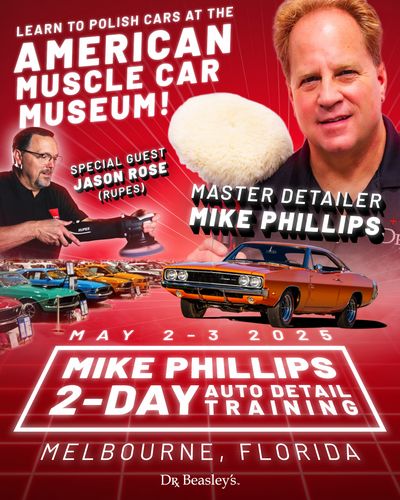Thank you. I tried the pad and polish they have, but did not help.
I have not used the GYEON Q2M PPF Renew, but the description says it contains a LIGHT abrasive.
Either the water spots on/in the PPF are too severe or the abrasives, pad and tool were not enough to abrade and thus level the surface.
What would you use, if you don t mind me asking? Thanks!
Of course, my answer is I use Dr. Beasley's NSP Primers. Since joining the Dr. Beasley's team, I have polished a LOT of clear plastics and had nothing but stellar results.
Without some testing, hard to say what will or will not work. If it were in my shop here in sunny, Stuart, Florida, I would start testing using the least aggressive approach like this,
NSP 45 with foam polishing pad on Porter Cable 7424XP - Speed 5-6
NSP 95 with foam polishing pad on Porter Cable 7424XP - Speed 5-6
NSP 150 with foam polishing pad on Porter Cable 7424XP - Speed 5-6
I would be using a very safe, short stroke random orbital polisher with a very safe foam polishing pad, (any quality brand, changing to fresh pad for each next test), and knowing, if I have to go all the way to NSP 150, I may have to come back and re-polish with a less aggressive process.
On clear, flexible vinyl windows, I used a rotary polisher with a foam cutting pad and an NSP that's not public yet and then worked my way to NSP 45 with the PC and had almost new-like results.
1964 Amphicar – Paintwork, Glass & Plastic Correction
In a few minutes, I'm going to see if I can fix this before the class starts on Friday. If I can fix it, I'll save half the window to show the class how I did it. If I cannot fix it, it will be because the yellowing/browning is not ON the inside and outside surface of the window, it's because the yellowing/browning is THROUGHOUT the matrix of plastic and thus NOTHING can fix it.
Stay tuned.
Mike





